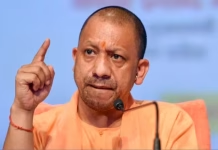Drawing lessons from security protocols of Parliament, the state is working closely with agencies like the Defence Research and Development Organisation (DRDO) and the Electronics Corporation of India Ltd (ECIL) to design a multi-layered safety mechanism.
Senior officials familiar with the matter said that consultations are ongoing with the DRDO, ECIL, Uttar Pradesh Police, paramilitary forces, and both state and national disaster management authorities.
An evaluation by the Bhabha Atomic Research Centre (BARC) is also being considered as part of the plan, they said.
“The system will be used for VIP and VVIP security, and during high-profile visits and events at strategic sites across the state,” an officer aware of the development told PTI.
“It will be based on technology from foreign countries, either the US or France,” the officer added.
The proposed CBRN setup is part of a broader effort to strengthen internal security in light of recent geopolitical tensions, particularly with Pakistan. The initiative also builds on recent steps taken by the state government to secure the Uttar Pradesh Assembly complex.
Earlier this year, the traditional vehicle stickers for MLAs, MLCs and other visitors were replaced with RFID tags after reports surfaced of fraudulent access using tampered passes.
During a session of the assembly on March 5, Speaker Satish Mahana highlighted the security concerns, saying: “It has come to our notice that fake vehicle passes are being created by tampering with those issued by the Assembly Secretariat. This is a serious security concern, and the matter has been referred to the state’s purchasing department for investigation.” Under the envisioned CBRN safety net, multiple technologies will be integrated to detect and neutralise threats like viruses, spores, and toxins. A single setup may cost up to Rs 10 crore, according to initial estimates.
In a parallel move, the state is also planning to procure advanced robotic surveillance devices, inspired by the US Department of Homeland Security and recent security technology exchanges during a visit by US Senator J D Vance to the Taj Mahal in Agra.
These robots, based on French technology, will offer day and night surveillance capabilities and can be deployed in high-risk zones such as assembly premises, airports, or during major public events.
Each robot, costing around Rs 80 lakh, is designed to access hard-to-reach and hazardous zones without endangering human lives. With a range of up to 90 metres, these wheeled devices can scan vehicles — even go underneath them — for potential explosives, and are equipped to traverse stairs, rough terrains, and confined spaces.
“Robot-based threat assessments can significantly reduce the need for human intervention in danger zones,” the officer said.
“Conventional wars and threats are a thing of the past now. We have to move past those trends and be future-ready,” the officer added.
If implemented, Uttar Pradesh will become the first state police force in India to adopt a Parliament-style integrated security model against CBRN and explosive threats, the senior officer noted. PTI KIS MAN RHL




